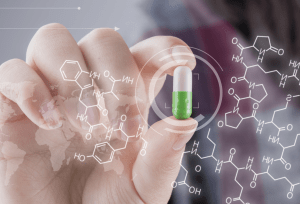Regulatory compliance in the life sciences field is a complex landscape, particularly when it intersects with multilingual requirements. From pharmaceutical labeling to clinical trial documentation, ensuring compliance hinges on accurate and culturally adapted translations. Below are practical tips for successfully navigating regulatory compliance in life science translations.
1. Understanding Global Regulatory Frameworks
Life sciences operate under strict oversight by global regulatory bodies demanding precision in all communications. Official organizations have different documentation standards.
These organizations include:
- The U.S. Food and Drug Administration (FDA)
- The European Medicines Agency (EMA)
- Japan’s Pharmaceuticals and Medical Devices Agency (PMDA)
To ensure compliance with regional regulations, it’s essential to understand the specific requirements of each market. For instance, the FDA prioritizes comprehensive readability for labeling and patient information.
In contrast, the EMA focuses on multilingual labeling to accommodate all EU member states. Japan, on the other hand, emphasizes the use of culturally specific terminology in product descriptions due to its unique regulatory nuances. These varying requirements highlight the need for a deep understanding of regional compliance standards. Staying updated on legal changes, such as the EU’s evolving Medical Device Regulation (MDR) framework, is critical to ensuring translations meet necessary standards and avoid delays.
2. Ensuring Accuracy and Consistency in Terminology
Terminology accuracy is non-negotiable in life science translations. A single mistranslation can have serious regulatory, legal, and even health consequences. It is essential to maintain terminological consistency across all documentation to build trust with both regulators and end users.
Tools such as glossaries and translation memories (TM) are invaluable for ensuring uniformity. Glossaries allow translators to use approved terms consistently, while translation memories ensure repetitive segments, such as legal disclaimers, retain uniform phrasing across projects. Additionally, addressing linguistic nuances becomes crucial, as technical medical terms might not map directly across languages. Working with subject-matter experts ensures that terminology aligns with industry usage in the target language.
3. Managing Multilingual Documentation for Compliance
Creating multilingual documentation for life science products is inherently challenging due to strict requirements for precision and readability. Critical documents like clinical trial protocols, patient information leaflets, and product labeling must remain consistent with the original while adhering to local requirements.
To meet compliance and cultural needs, ensure translations are readable to the target audience without losing technical accuracy. Using simple language is important in documents for patients. This helps ensure that everyone understands them.
However, regulatory texts need to use strict technical terms. Employing localization strategies, such as accounting for cultural context and regulatory phrasing conventions, helps meet both regulatory and linguistic expectations.
4. Quality Assurance and Validation Processes
Quality in life sciences documentation is paramount, and translations undergo rigorous scrutiny to meet compliance standards. Quality assurance (QA) measures should include back-translation. This means taking a translated document and translating it back to the original language. This process helps ensure that no meaning is lost.
Additionally, independent reviews by a second linguist reduce the risk of errors. Certifications such as ISO 17100 (specialized translation management) and ISO 13485 (specific to medical devices) establish high standards of quality and reliability. Investing in review tools and technologies, such as computer-assisted translation (CAT) tools, accelerates the QA process while improving consistency.
5. Plan for Multi-Language Translation
A consistent multilingual translation strategy can save both time and money. Delays in launching translations can disrupt both clinical trial deadlines and product rollouts, resulting in potential compliance risks. To avoid bottlenecks, plan translations early in the process. Use project management tools to organize workflows across multiple languages while accounting for regional preferences and compliance priorities.
Additionally, aim for collaborative efficiency among linguists, regulatory officers, and client-side teams to ensure translations match timelines and quality expectations.
6. Prioritize Data Security and Confidentiality
Life science businesses handle sensitive data, from clinical trial results to personal health information. Ensuring the confidentiality and security of these materials is not just ethical but also a legal responsibility under laws like the GDPR in the EU.
Translation providers should implement best practices to protect data, such as encrypted file transfers, secure servers, and non-disclosure agreements (NDAs). ISO certifications, particularly those related to data and information security, provide additional layers of assurance when handling confidential materials.
7. Collaboration with Specialized Translation Providers
Finally, success in regulatory compliance often depends on partnering with the right experts. Translation providers specializing in life sciences and regulations, with dedicated linguists who understand medical jargon and compliance standards, can make a significant difference.
These providers offer more than just translations—they deliver a tailored approach. Through effective communication between the client, translator, and regulatory consultant, they ensure that every document produced is accurate, culturally aware, and compliant. This teamwork can reduce errors, improve efficiency, and ensure smooth regulatory approval.
Successfully navigating regulatory compliance in life science translations requires a deep understanding of regional frameworks, strict adherence to quality, and meticulous attention to detail. By employing the strategies outlined above, businesses can build reliable multilingual workflows that meet diverse regulatory expectations, helping them deliver safe and compliant products to the global market.
Why Chose EC Innovations for Your Life Sciences Translation Needs?
EC Innovations specializes in life sciences translation services. With a team of highly skilled linguists and subject matter experts, we ensure your translations are accurate and fully compliant with industry standards.
We provide a wide range of services, including regulatory consulting, multilingual desktop publishing, and thorough quality assurance. Our ISO-certified workflows and dedication to data security make us a reliable partner in the life sciences field, where regulatory compliance is a top priority.





